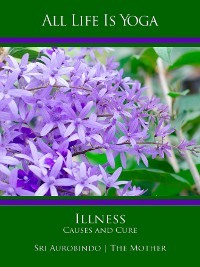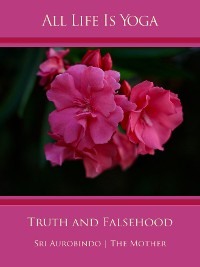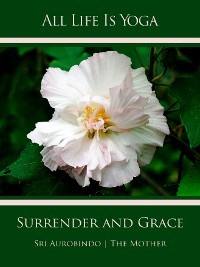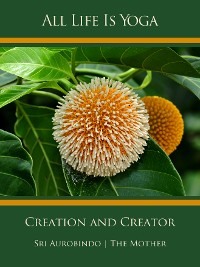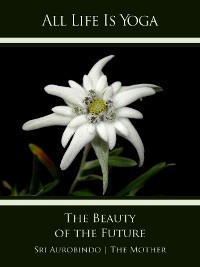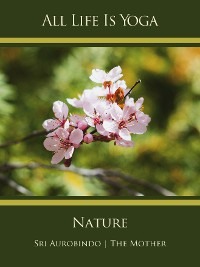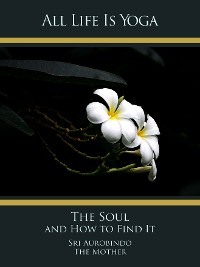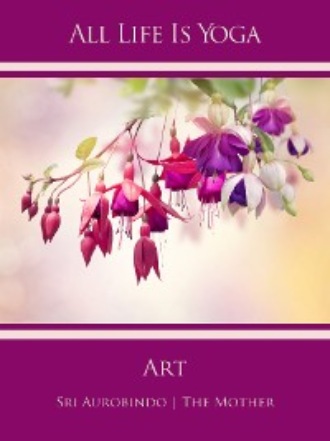
Полная версия
All Life Is Yoga: Art

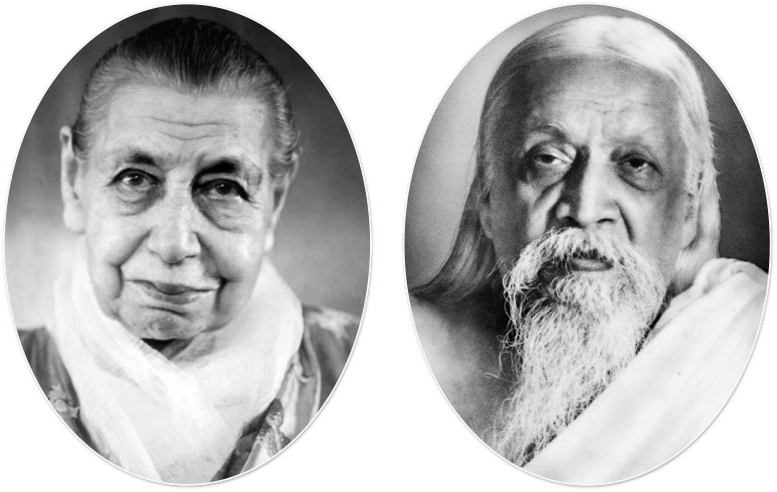
Omsriaurobindomira
All
Life
Is
Yoga
“All life is Yoga.” – Sri Aurobindo
Art
Sri Aurobindo | The Mother

SRI AUROBINDO
DIGITAL EDITION

Copyright 2021
AURO MEDIA
Verlag und Fachbuchhandel
Wilfried Schuh
Germany
www.sriaurobindo.center
www.auro.media
eBook Design

SRI AUROBINDO DIGITAL EDITION
Germany, Berchtesgaden
ALL LIFE IS YOGA
Art Selections from the Works of Sri Aurobindo and The Mother Third edition 2021 ISBN 978-3-96387-018-7

© Photos and selections of the works of
Sri Aurobindo and the Mother:
Sri Aurobindo Ashram Trust
Puducherry, India

Flower on the cover:
Fuchsia. Several colours. Spiritual significance and explanation given by the Mother: Art Living only to express beauty.
Publisher’s Note
This is one in a series of some e-books created by SRI AUROBINDO DIGITAL EDITION and published by AURO MEDIA under the title All Life Is Yoga. Our effort is to bring together, from Sri Aurobindo and the Mother, simple passages with a practical orientation on specific subjects, so that everyone may feel free to choose a book according to his inner need. The topics cover the whole field of human activity, because true spirituality is not the rejection of life but the art of perfecting life.
While the passages from Sri Aurobindo are in the original English, most of the passages from the Mother (selections from her talks and writings) are translations from the original French. We must also bear in mind that the excerpts have been taken out of their original context and that a compilation, in its very nature, is likely to have a personal and subjective approach. A sincere attempt, however, has been made to be faithful to the vision of Sri Aurobindo and the Mother. These excerpts are by no means exhaustive.
Bringing out a compilation from the writings of Sri Aurobindo and the Mother, which have a profound depth and wideness unique, is a difficult task. The compiler’s subjective tilt and preferences generally result in highlighting some aspects of the issues concerned while the rest is by no means less significant. Also without contexts of the excerpts the passages reproduced may not fully convey the idea – or may be misunderstood or may reduce a comprehensive truth into what could appear like a fixed principle.
The reader may keep in mind this inherent limitation of compilations; compilations are however helpful in providing an introduction to the subject in a handy format. They also give the readers a direct and practical feel of some of the profound issues and sometimes a mantric appeal, musing on which can change one’s entire attitude to them.
The excerpts from the writings of Sri Aurobindo and the Mother carry titles and captions chosen by the editor, highlighting the theme of the excerpts and, whenever possible, borrowing a phrase from the text itself. The sources of the excerpts are given at the end of each issue.
We hope these compilations will inspire the readers to go to the complete works of Sri Aurobindo and the Mother and will help them to mould their lives and their environments towards an ever greater perfection.
“True spirituality is not to renounce life, but to make life perfect with a Divine Perfection.” – The Mother
* * *
ContentsTitle PageCopyrightPublisher’s NoteI. WORDS OF SRI AUROBINDOQuotation from Sri Aurobindo1. Beauty in Life2. The Divine as Beauty3. The Distinctive Character of Indian Art4. Poetic Creation5. Creation by the WordII. WORDS OF THE MOTHERQuotation from the Mother1. The Most Important Reason of Art2. Art and Yoga3. The Yogin’s Aim in the Arts4. The Inspired Artist5. No Limitation to the Expression of the Divine6. Who is an Artist?7. What Men Call “Artistry”8. Beauty is Universal9. Art in Modern Times10. Why is Modern Art Ugly?11. Music12. Mushroom Art13. Child Prodigies14. The Higher and Lower PerfectionAPPENDIXReferencesGuideCoverTable of ContentsStart Reading

Sri Aurobindo
If Art’s service is but to imitate Nature, then burn all the picture galleries and let us have instead photographic studios. It is because Art reveals what Nature hides, that a small picture is worth more than all the jewels of the millionaires and the treasures of the princes.
If you only imitate visible Nature, you will perpetrate either a corpse, a dead sketch or a monstrosity; Truth lives in that which goes behind and beyond the visible and sensible and sensible. — Sri Aurobindo
* * *
Chapter 1
Beauty in Life
The preoccupation with universal beauty even in its aesthetic forms has an intense power for refining and subtilising the nature, and at its highest it is a great force for purification.
*
Man’s seeking after beauty reaches its most intense and satisfying expression in the great creative arts, poetry, painting, sculpture, architecture, but in its full extension there is no activity of his nature or his life from which it need or ought to be excluded, – provided we understand beauty both in its widest and its truest sense. A complete and universal appreciation of beauty and the making entirely beautiful our whole life and being must surely be a necessary character of the perfect individual and the perfect society. But in its origin this seeking for beauty is not rational; it springs from the roots of our life, it is an instinct and an impulse, an instinct of aesthetic satisfaction and an impulse of aesthetic creation and enjoyment. Starting from the infrarational parts of our being, this instinct and impulse begin with much imperfection and impurity and with great crudities both in creation and in appreciation. It is here that the reason comes in to distinguish, to enlighten, to correct, to point out the deficiencies and the crudities, to lay down laws of aesthetics and to purify our appreciation and our creation by improved taste and right knowledge. While we are thus striving to learn and correct ourselves, it may seem to be the true law-giver both for the artist and the admirer and, though not the creator of our aesthetic instinct and impulse, yet the creator in us of an aesthetic conscience and its vigilant judge and guide. That which was an obscure and erratic activity, it makes self-conscious and rationally discriminative in its work and enjoyment.
But again this is true only in restricted bounds or, if anywhere entirely true, then only on a middle plane of our aesthetic seeking and activity. Where the greatest and most powerful creation of beauty is accomplished and its appreciation and enjoyment rise to the highest pitch, the rational is always surpassed and left behind. The creation of beauty in poetry and art does not fall within the sovereignty or even within the sphere of the reason. The intellect is not the poet, the artist, the creator within us; creation comes by a suprarational influx of light and power which must work always, if it is to do its best, by vision and inspiration. It may use the intellect for certain of its operations, but in proportion as it subjects itself to the intellect, it loses in power and force of vision and diminishes the splendour and truth of the beauty it creates. The intellect may take hold of the influx, moderate and repress the divine enthusiasm of creation and force it to obey the prudence of its dictates, but in doing so it brings down the work to its own inferior level, and the lowering is in proportion to the intellectual interference. For by itself the intelligence can only achieve talent, though it may be a high and even, if sufficiently helped from above, a surpassing talent. Genius, the true creator, is always suprarational in its nature and its instrumentation even when it seems to be doing the work of the reason; it is most itself, most exalted in its work, most sustained in the power, depth, height and beauty of its achievement when it is least touched by, least mixed with any control of the mere intellectuality and least often drops from its heights of vision and inspiration into reliance upon the always mechanical process of intellectual construction. Art-creation which accepts the canons of the reason and works within the limits laid down by it, may be great, beautiful and powerful; for genius can preserve its power even when it labours in shackles and refuses to put forth all its resources: but when it proceeds by means of the intellect, it constructs, but does not create. It may construct well and with a good and faultless workmanship, but its success is formal and not of the spirit, a success of technique and not the embodiment of the imperishable truth of beauty seized in its inner reality, its divine delight, its appeal to a supreme source of ecstasy, Ananda.
There have been periods of artistic creation, ages of reason, in which the rational and intellectual tendency has prevailed in poetry and art; there have even been nations which in their great formative periods of art and literature have set up reason and a meticulous taste as the sovereign powers of their aesthetic activity. At their best these periods have achieved work of a certain greatness, but predominantly of an intellectual greatness and perfection of technique rather than achievements of a supreme inspired and revealing beauty; indeed their very aim has been not the discovery of the deeper truth of beauty, but truth of ideas and truth of reason, a critical rather than a true creative aim. Their leading object has been an intellectual criticism of life and nature elevated by a consummate poetical rhythm and diction rather than a revelation of God and man and life and nature in inspired forms of artistic beauty. But great art is not satisfied with representing the intellectual truth of things, which is always their superficial or exterior truth; it seeks for a deeper and original truth which escapes the eye of the mere sense or the mere reason, the soul in them, the unseen reality which is not that of their form and process but of their spirit. This it seizes and expresses by form and idea, but a significant form, which is not merely a faithful and just or a harmonious reproduction of outward Nature, and a revelatory idea, not the idea which is merely correct, elegantly right or fully satisfying to the reason and taste. Always the truth it seeks is first and foremost the truth of beauty, – not, again, the formal beauty alone or the beauty of proportion and right process which is what the sense and the reason seek, but the soul of beauty which is hidden from the ordinary eye and the ordinary mind and revealed in its fullness only to the unsealed vision of the poet and artist in man who can seize the secret significances of the universal poet and artist, the divine creator who dwells as their soul and spirit in the forms he has created.
The art-creation which lays a supreme stress on reason and taste and on perfection and purity of a technique constructed in obedience to the canons of reason and taste, claimed for itself the name of classical art; but the claim, like the too trenchant distinction on which it rests, is of doubtful validity. The spirit of the real, the great classical art and poetry is to bring out what is universal and subordinate individual expression to universal truth and beauty, just as the spirit of romantic art and poetry is to bring out what is striking and individual and this it often does so powerfully or with so vivid an emphasis as to throw into the background of its creation the universal, on which yet all true art romantic or classical builds and fills in its forms. In truth, all great art has carried in it both a classical and a romantic as well as a realistic element, – understanding realism in the sense of the prominent bringing out of the external truth of things, not the perverse inverted romanticism of the “real” which brings into exaggerated prominence the ugly, common or morbid and puts that forward as the whole truth of life. The type of art to which a great creative work belongs is determined by the prominence it gives to one element and the sub-dual of the others into subordination to its reigning spirit. But classical art also works by a large vision and inspiration, not by the process of the intellect. The lower kind of classical art and literature, – if classical it be and not rather, as it often is, pseudo-classical, intellectually imitative of the external form and process of the classical, – may achieve work of considerable, though a much lesser power, but of an essentially inferior scope and nature; for to that inferiority it is self-condemned by its principle of intellectual construction. Almost always it speedily degenerates into the formal or academic, empty of real beauty, void of life and power, imprisoned in its slavery to form and imagining that when a certain form has been followed, certain canons of construction satisfied, certain rhetorical rules or technical principles obeyed, all has been achieved. It ceases to be art and becomes a cold and mechanical workmanship.
This predominance given to reason and taste first and foremost, sometimes even almost alone, in the creation and appreciation of beauty arises from a temper of mind which is critical rather than creative; and in regard to creation its theory falls into a capital error. All artistic work in order to be perfect must indeed have in the very act of creation the guidance of an inner power of discrimination constantly selecting and rejecting in accordance with a principle of truth and beauty which remains always faithful to a harmony, a proportion, an intimate relation of the form to the idea; there is at the same time an exact fidelity of the idea to the spirit, nature and inner body of the thing of beauty which has been revealed to the soul and the mind, its svarupa and svabhava. Therefore this discriminating inner sense rejects all that is foreign, superfluous, otiose, all that is a mere diversion distractive and deformative, excessive or defective, while it selects and finds sovereignly all that can bring out the full truth, the utter beauty, the inmost power. But this discrimination is not that of the critical intellect, nor is the harmony, proportion, relation it observes that which can be fixed by any set law of the critical reason; it exists in the very nature and truth of the thing itself, the creation itself, in its secret inner law of beauty and harmony which can be seized by vision, not by intellectual analysis. The discrimination which works in the creator is therefore not an intellectual self-criticism or an obedience to rules imposed on him from outside by any intellectual canons, but itself creative, intuitive, a part of the vision, involved in and inseparable from the act of creation. It comes as part of that influx of power and light from above which by its divine enthusiasm lifts the faculties into their intense suprarational working. When it fails, when it is betrayed by the lower executive instruments rational or infrarational, – and this happens when these cease to be passive and insist on obtruding their own demands or vagaries, – the work is flawed and a subsequent act of self-criticism becomes necessary. But in correcting his work the artist who attempts to do it by rule and intellectual process, uses a false or at any rate an inferior method and cannot do his best. He ought rather to call to his aid the intuitive critical vision and embody it in a fresh act of inspired creation or recreation after bringing himself back by its means into harmony with the light and law of his original creative initiation. The critical intellect has no direct or independent part in the means of the inspired creator of beauty.
In the appreciation of beauty it has a part, but it is not even there the supreme judge or law-giver. The business of the intellect is to analyse the elements, parts, external processes, apparent principles of that which it studies and explain their relations and workings; in doing this it instructs and enlightens the lower mentality which has, if left to itself, the habit of doing things or seeing what is done and taking all for granted without proper observation and fruitful understanding. But as with truth of religion, so with the highest and deepest truth of beauty, the intellectual reason cannot seize its inner sense and reality, not even the inner truth of its apparent principles and processes, unless it is aided by a higher insight not its own. As it cannot give a method, process or rule by which beauty can or ought to be created, so also it cannot give to the appreciation of beauty that deeper insight which it needs; it can only help to remove the dullness and vagueness of the habitual perceptions and conceptions of the lower mind which prevent it from seeing beauty or which give it false and crude aesthetic habits: it does this by giving to the mind an external idea and rule of the elements of the thing it has to perceive and appreciate. What is farther needed is the awakening of a certain vision, an insight and an intuitive response in the soul. Reason which studies always from outside, cannot give this inner and more intimate contact; it has to aid itself by a more direct insight springing from the soul itself and to call at every step on the intuitive mind to fill up the gap of its own deficiencies.
We see this in the history of the development of literary and artistic criticism. In its earliest stages the appreciation of beauty is instinctive, natural, inborn, a response of the aesthetic sensitiveness of the soul which does not attempt to give any account of itself to the thinking intelligence. When the rational intelligence applies itself to this task, it is not satisfied with recording faithfully the nature of the response and the thing it has felt, but it attempts to analyse, to lay down what is necessary in order to create a just aesthetic gratification, it prepares a grammar of technique, an artistic law and canon of construction, a sort of mechanical rule of process for the creation of beauty, a fixed code or Shastra. This brings in the long reign of academic criticism superficial, technical, artificial, governed by the false idea that technique, of which alone critical reason can give an entirely adequate account, is the most important part of creation and that to every art there can correspond an exhaustive science which will tell us how the thing is done and give us the whole secret and process of its doing. A time comes when the creator of beauty revolts and declares the charter of his own freedom, generally in the shape of a new law or principle of creation, and this freedom once vindicated begins to widen itself and to carry with it the critical reason out of all its familiar bounds. A more developed appreciation emerges which begins to seek for new principles of criticism, to search for the soul of the work itself and explain the form in relation to the soul or to study the creator himself or the spirit, nature and ideas of the age he lived in and so to arrive at a right understanding of his work. The intellect has begun to see that its highest business is not to lay down laws for the creator of beauty, but to help us to understand himself and his work, not only its form and elements but the mind from which it sprang and the impressions its effects create in the mind that receives. Here criticism is on its right road, but on a road to a consummation in which the rational understanding is overpassed and a higher faculty opens, suprarational in its origin and nature.
For the conscious appreciation of beauty reaches its height of enlightenment and enjoyment not by analysis of the beauty enjoyed or even by a right and intelligent understanding of it, – these things are only a preliminary clarifying of our first unenlightened sense of the beautiful, – but by an exaltation of the soul in which it opens itself entirely to the light and power and joy of the creation. The soul of beauty in us identifies itself with the soul of beauty in the thing created and feels in appreciation the same divine intoxication and uplifting which the artist felt in creation. Criticism reaches its highest point when it becomes the record, account, right description of this response; it must become itself inspired, intuitive, revealing. In other words, the action of the intuitive mind must complete the action of the rational intelligence and it may even wholly replace it and do more powerfully the peculiar and proper work of the intellect itself; it may explain more intimately to us the secret of the form, the strands of the process, the inner cause, essence, mechanism of the defects and limitations of the work as well as of its qualities. For the intuitive intelligence when it has been sufficiently trained and developed, can take up always the work of the intellect and do it with a power and light and insight greater and surer than the power and light of the intellectual judgement in its widest scope. There is an intuitive discrimination which is more keen and precise in its sight than the reasoning intelligence.
What has been said of great creative art, that being the form in which normally our highest and intensest aesthetic satisfaction is achieved, applies to all beauty, beauty in Nature, beauty in life as well as beauty in art. We find that in the end the place of reason and the limits of its achievement are precisely of the same kind in regard to beauty as in regard to religion. It helps to enlighten and purify the aesthetic instincts and impulses, but it cannot give them their highest satisfaction or guide them to a complete insight. It shapes and fulfils to a certain extent the aesthetic intelligence, but it cannot justly pretend to give the definitive law for the creation of beauty or for the appreciation and enjoyment of beauty. It can only lead the aesthetic instinct, impulse, intelligence towards a greatest possible conscious satisfaction, but not to it; it has in the end to hand them over to a higher faculty which is in direct touch with the suprarational and in its nature and workings exceeds the intellect.
And for the same reason, because that which we are seeking through beauty is in the end that which we are seeking through religion, the Absolute, the Divine. The search for beauty is only in its beginning a satisfaction in the beauty of form, the beauty which appeals to the physical senses and the vital impressions, impulsions, desires. It is only in the middle a satisfaction in the beauty of the ideas seized, the emotions aroused, the perception of perfect process and harmonious combination. Behind them the soul of beauty in us desires the contact, the revelation, the uplifting delight of an absolute beauty in all things which it feels to be present, but which neither the senses and instincts by themselves can give, though they may be its channels, – for it is supra-sensuous, – nor the reason and intelligence, though they too are a channel, – for it is suprarational, supra-intellectual, – but to which through all these veils the soul itself seeks to arrive. When it can get the touch of this universal, absolute beauty, this soul of beauty, this sense of its revelation in any slightest or greatest thing, the beauty of a flower, a form, the beauty and power of a character, an action, an event, a human life, an idea, a stroke of the brush or the chisel or a scintillation of the mind, the colours of a sunset or the grandeur of the tempest, it is then that the sense of beauty in us is really, powerfully, entirely satisfied. It is in truth seeking, as in religion, for the Divine, the All-Beautiful in man, in nature, in life, in thought, in art; for God is Beauty and Delight hidden in the variation of his masks and forms. When, fulfilled in our growing sense and knowledge of beauty and delight in beauty and our power for beauty, we are able to identify ourselves in soul with this Absolute and Divine in all the forms and activities of the world and shape an image of our inner and our outer life in the highest image we can perceive and embody of the All-Beautiful, then the aesthetic being in us who was born for this end, has fulfilled himself and risen to his divine consummation. To find highest beauty is to find God; to reveal, to embody, to create, as we say, highest beauty is to bring out of our souls the living image and power of God.




